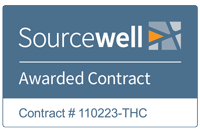The Most Common System Used Today
Server-based software is still the majority of deployed applications; but we have seen web-based (also known as cloud computing) systems chosen 4-1 for new client implementations.
Both server and cloud computing software perform well; but costs, deployment times and required IT resources need be considered. From an efficiency standpoint, it is difficult to beat the easy deployment and lower operational cost associated with cloud computing software.
Server-Based Software
It depends on who you talk to; server-based technology has been the traditional way to deliver software programs for the past 30 years. This will never go away, but the new cloud computing alternatives makes sense for a lot of business. Based on client feedback, the ‘pros’ for server-based software are performance and reliable access to corporate information. However, with the price of internet access continually declining while becoming more reliable…. we are seeing these perceived ‘pros’ come under attack.
The waste business is not a bleeding edge technology business. Clients want reliability at an affordable price. Server-based solutions are not outdated; there just might be a more efficient way to run your business….. and by the way, it’s less expensive, more reliable and improves your data security.
The increased start up and operational costs appear to be the main ‘cons’ with traditional server based solutions. You constantly need to upgrade hardware and manage your systems. With cloud computing software, you eliminate 30% of the cost…. the hardware. You eliminate 50% of the headaches… .the hardware. I can not think of one client who has moved to a cloud computing software solution and later moved back to server based. It just does not happen. When you save money, lower you’re operating expenses and provide more value, it’s difficult to argue with that model. With more corporations implementing cloud computing software application, the overall cost differences is becoming much easier to calculate.
A Closer Look at Cloud Computing
Cloud computing software has been around for 20+ years; the original name was ASP “application service provider”. I initially heard the term ‘cloud computing’ about five years ago, but realized this is just another vernacular for delivering software via the web. Large-scale deployment and acceptances of web-based software has been in full force for more than 10 years. Innovative companies like Google and SalesForce.com pioneered the cloud environment; and now Microsoft, HP, Oracle, IBM and Intel are all focusing the majority of their attention on cloud deployments.
In a competitive world like waste hauling, the operations that are thriving are efficient and leveraging their investments. That is the big advantage with cloud computing software, you no longer pay for hardware, you no longer support hardware, you only pay for what you use and you increase your reliability and security. I would say web-based software is ideally suited for small to mid-size organizations, but we have seen larger $100M+ multi-site operations easily migrate from a server-based solution to our cloud computing solution with zero downtown. The results have been huge costs savings within their IT budgets, a more robust security measure and a disaster recovery plan that has been tested and would have costs tens of thousands to implement.
Steps to Transitioning
The process of transitioning from server-based to cloud-based depends if you are switching programs. If you are staying within the same program, simply export your data and the switch is negligible. Soft-Pak clients who have performed this transition typically do the switch late on a Friday and the customer service representatives start early Monday morning with no re-training. Our conversion team performs a number of tests before ‘going live’, but we generally have it down to a simple routine at this point.
If you are switching software programs, that is another story. Data conversions, training of users and management
reports need to be taken into consideration. Depending on the size and complexity of the operation, a waste hauler can be
converted, trained and up and running inside 60 to 120 days.
Why Cloud?
It goes back to costs, reliability, and security. With cloud computing, 95 percent of the time you will lower your start up and operational costs, improve data reliability while implementing a solid overall data security plan. It’s that simple; you get a lot more and pay less for it.
There are always exceptions to the rule, but use common sense when researching a vendor. A software company’s might claim to offer “cloud computing software,” but buyer beware. Don’t place the reliability of your business with an outfit that is located in hurricane alley like Florida; secure and reliable data centers are key.



